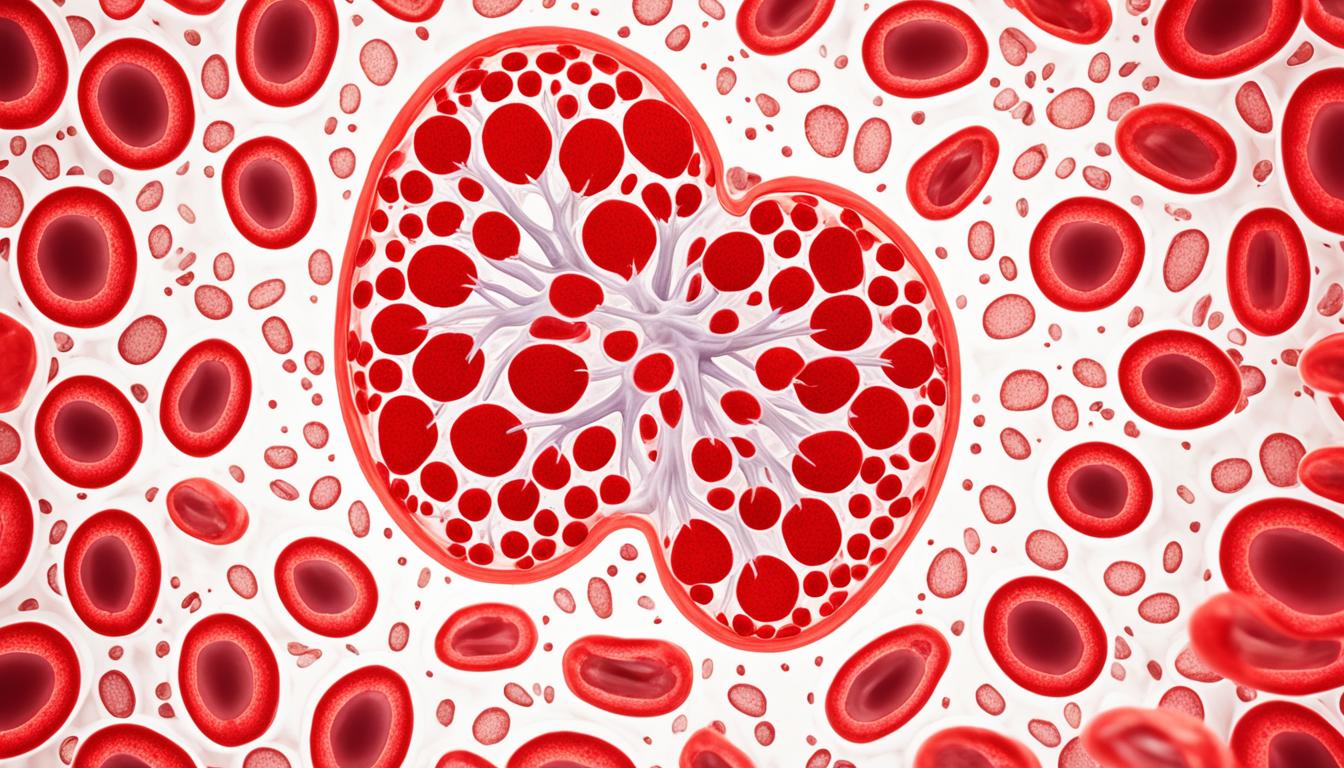Gross hematuria means there is blood in the urine. There are two types: one you can see with the naked eye, and the other, you need a test to find. Signs include dark red urine, pain when you pee, trouble peeing, and pain in your lower stomach.
Kidney stones, infections, and even tumors can cause this. Doctors use tests such as urine checks and ultrasounds to find the reason for it. They look closely to know what’s going on.
Doctors treat this with drugs, surgery, or other ways. Lately, using stem cells to fix the problem has shown hope. This method heals the damaged parts of the urinary system. But, we still need to learn more to be sure it’s safe and works well for everyone.
Key Takeaways:
- Gross hematuria is characterized by the presence of blood in the urine, which can be visible or detected through urine analysis.
- Common symptoms of gross hematuria include dark red urine, painful urination, difficulty urinating, and lower abdominal pain.
- Possible causes of gross hematuria include kidney stones, urinary tract infections, tumors in the urinary tract, trauma to the urinary system, and renal conditions such as glomerulonephritis.
- Diagnosing gross hematuria involves various laboratory tests, including urinalysis, urine cytology, and renal-urological ultrasound.
- Treatment options for gross hematuria may involve medical management with hemostatic drugs, antibiotics, or surgical interventions.
- Stem cell therapy shows promise as an alternative treatment for gross hematuria, utilizing stem cells to regenerate damaged urinary system tissues.
- Further research and clinical studies are necessary to explore the effectiveness and safety of stem cell therapy for gross hematuria fully.
Causes of Gross Hematuria
Gross hematuria means there’s visible blood in the urine. Many things can lead to it. Knowing these reasons helps doctors treat it right.
Kidney Stones
Kidney stones are a key reason for gross hematuria. When these hard lumps form in the urine path, they can make the lining bleed.
Urinary Tract Infections
UTIs can cause the urinary system to swell and bleed, putting blood in the urine. Severe or repeated UTIs are often linked to this issue.
Urinary Tract Tumors
Tumors in the bladder or kidneys can also trigger this. These growths disturb how the urinary system works, often leading to bloody urine.
Trauma to the Urinary System
Any injury that affects the urinary system, like a hard fall, can lead to blood in the urine. This happens if the injury harms the system’s tissues and blood vessels.
Renal Conditions
Issues with the kidneys, like glomerulonephritis, can make urine bloody. This problem arises when the kidneys’ filtering units get swollen and inflamed.
Finding out what’s behind the gross hematuria is important for treatment. Doctors need to do lots of tests to pinpoint the issue and make a plan to treat it right.
Diagnosing Gross Hematuria
Diagnosing gross hematuria means carefully checking a patient’s symptoms and doing lab tests. The first thing doctors do is a urinalysis. This checks how many red blood cells are in the urine. The test is very important to find out what’s causing the blood in the urine.
Doctors also order more lab tests to find the reason for the blood in the urine. One of these tests is urine cytology. It looks for any abnormal or cancerous cells in the urine sample.
A renal-urological ultrasound is sometimes done too. This test uses sound waves to make pictures of the urinary system. It’s safe and painless.
Doctors might also do blood tests and measure protein in the urine over 24 hours. These tests help them understand the health of the kidneys. They also check for any underlying kidney problems or infections.
Sometimes, more tests are needed to fully understand the blood in the urine. This can include a cystoscopy or a kidney biopsy. A cystoscopy looks inside the urethra and bladder with a camera. A kidney biopsy is when a small piece of kidney tissue is removed and looked at under a microscope.
Summary:
It’s important to diagnose gross hematuria correctly. This helps doctors choose the best treatment and catch serious conditions early. Tests like urinalysis, urine cytology, and ultrasounds are key. They help find out why there’s blood in the urine so treatment can be given quickly.
Stem Cell Therapy for Gross Hematuria
Stem cell therapy is a new and exciting way to treat gross hematuria. It brings hope for regenerating the urinary system. Stem cells can become different cell types, making them ideal for fixing damaged tissues in the urinary system.
Early studies show stem cell therapy has promise for gross hematuria. It could help the kidneys and the rest of the urinary system heal. But, more research and clinical trials are needed to confirm its benefits, safety, and lasting effect.
Stem cell therapy might change how we manage gross hematuria. It could lead to better outcomes and life quality for patients. The future of treating gross hematuria looks bright, thanks to progress in regenerative medicine and stem cell research.

